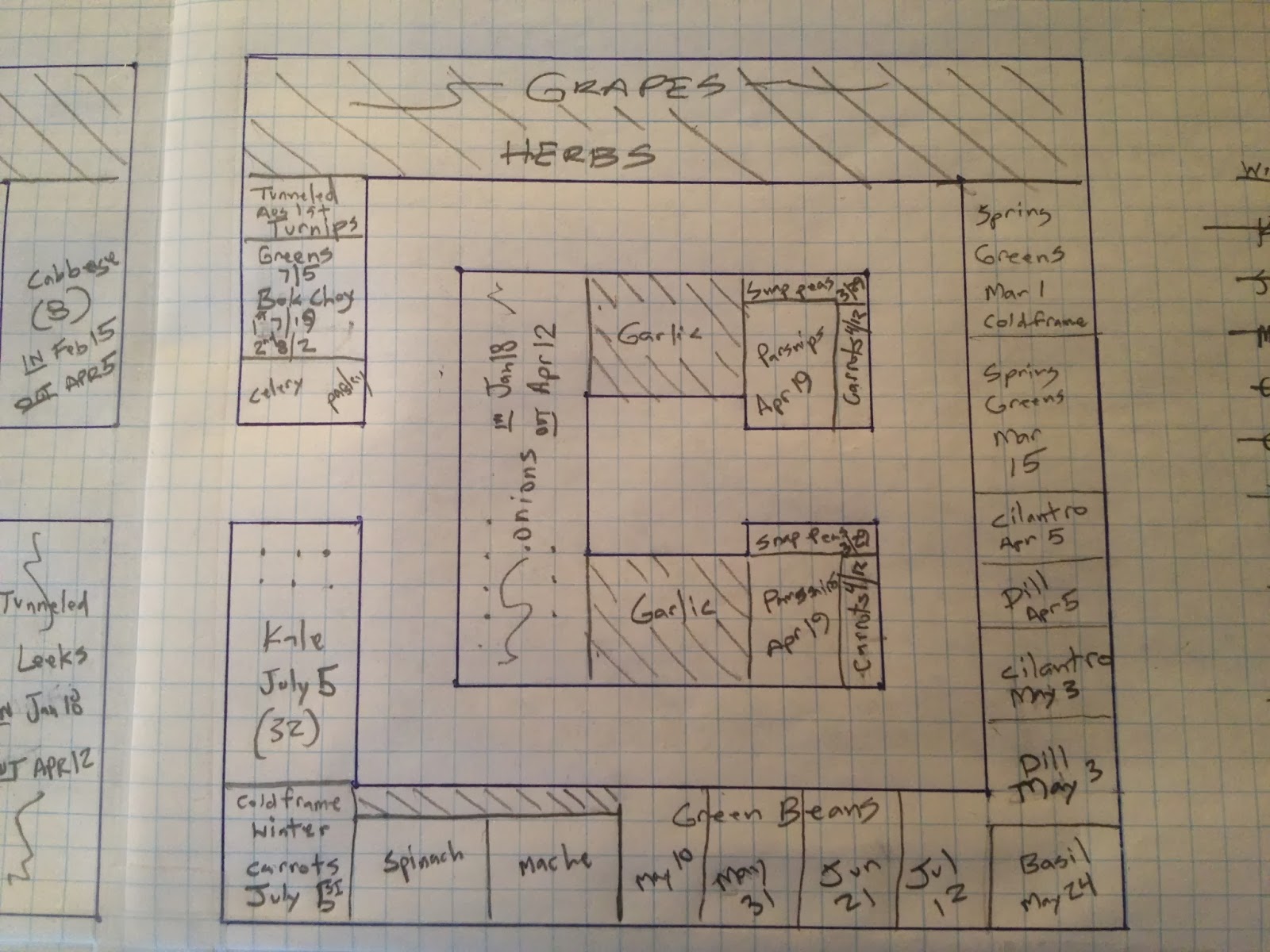2014 Master Plan: The Workshop Quadrant
As I mentioned in an earlier post, we worked really hard in our planning to make sure that next year's winter garden functioned better than this year's. In addition to plotting it out all in one general area, we also pushed the planting dates for most of it up to July 1.
The reason?
Well, this season I didn't get to sow many of our fall veggies until July 15th or even August 1st because (in many cases) I had to wait for spots to open up after I could pull out spent plants. Turns out that time frame is just a bit too late for things to get up to size before we lose daylight in mid-autumn. It's not so much the cold as the number of daylight hours you get that affects your plant growth. If you can get things fairly mature before October, you are basically just storing living (but nearly dormant) food in your garden instead of storing dying food in your fridge. (For more on this, see expert winter gardener Eliot Coleman's excellent book, The Four Season Harvest.)
Not only did I not leave quite enough growing time in good sunlight, but I also got stuck with some droughty weather during August, which led to a failure to germinate for many of the seeds I planted. I re-planted a few times, but that also added to the issue of tardiness here, and the result is that we really don't have a whole lot of greens this winter.
Since we are starting to miss salad, we decided to plant much earlier this coming summer, in hopes of a more robust salad bar next winter.
These earlier planting dates have mostly to do with the left side of this quadrant, where we have planned fall plantings of turnips, salad greens, bok choy, kale, carrots, spinach, and mache. Also in this section are celery and parsley, which will get planted in spring, but last so long into the fall that they will benefit by being under a tunnel with the rest of it. These blocks of plantings are directly across the central path from the cabbage and leeks, so our winter garden is much more compact. The mache and spinach are along the bottom row, but that is so their cold frames face toward the south to catch the most sun.
Also along the bottom of the quadrant are succession plantings of green beans.
On the right hand side are succession plantings of spring salad greens. A quick comparison to last year's plan shows that we have not rotated these crops. This is because this spot in the garden has sun in early spring, but is in shade once a nearby maple tree leafs out in May. That makes this spot ideal for early spring greens, which can germinate and get up to size in the sun, but are protected from bolting by the shade as the season continues. To keep up soil health and nutrients, we'll get the chickens on that area (which also helps eliminate any over-wintering insects) and add lots and lots of compost in the spring.
The rest of the right-hand side has dill, cilantro, and basil, in increasingly sunny sections of that row. There may or may not be enough sun for these to get very big here, but we'll see how it goes.
The top row, as always, is filled with more grapes and perennial herbs.
The center "C" is filled with onions, garlic (planted in fall), and two blocks of parsnips, plus some short trellises of snap peas and a couple rows of early carrots. The snap peas and carrots are also somewhat shaded here during the summer, but should be planted out in plenty of time to germinate in full sun. This is an area that does get more than partial sun, but it may take things longer to mature than it would in an area in full sun.
As always, there are experiments to be done.

Comments
Post a Comment